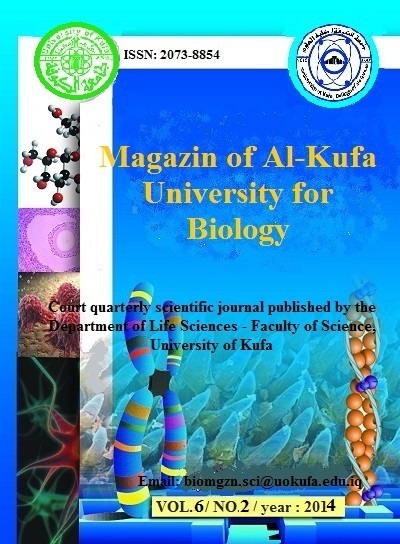Investigation of parasitic contamination in Kufa river water-Al-Najaf province
Abstract
This study was carried out to estimate the prevalence and potential for human infectivity of parasites in Kufa river. Samples were collected from three stations across Kufa river from July (2012) to February (2013) at approximately half monthly intervals.
The first two stations represent the location of the most frequent sources for water pollution: Station where sewage and drainage water have discharged and station of slaughterhouse where the animal's residues shed to water. The third station was the place where Najaf city supply with water Liquefaction of water.
There was a trend to higher concentration and more frequent incidence of parasites in the spring and fall, but positive samples were found in all seasons. Distribution of parasitic contamination in station one, determining the incidence and prevalence of human enteric protozoan parasites such as Giardia lamblia, Cryptosporidium parvum , Entamoeba coli, Entamoeba histolytica , Balantidium coli, in different parasitic contaminated samples will provide baseline data against the risk factors associated with waterborne pathogenic protozoa transmission.
Downloads
Downloads
Published
How to Cite
Issue
Section
License
Copyright (c) 2014 Rasha Amer Nouri Al- Tufaili, Sinan Qais Khayoon, Ammar Adil Rashid

This work is licensed under a Creative Commons Attribution 4.0 International License.
which allows users to copy, create extracts, abstracts, and new works from the Article, alter and revise the Article, and make commercial use of the Article (including reuse and/or resale of the Article by commercial entities), provided the user gives appropriate credit (with a link to the formal publication through the relevant DOI), provides a link to the license, indicates if changes were made and the licensor is not represented as endorsing the use made of the work.












